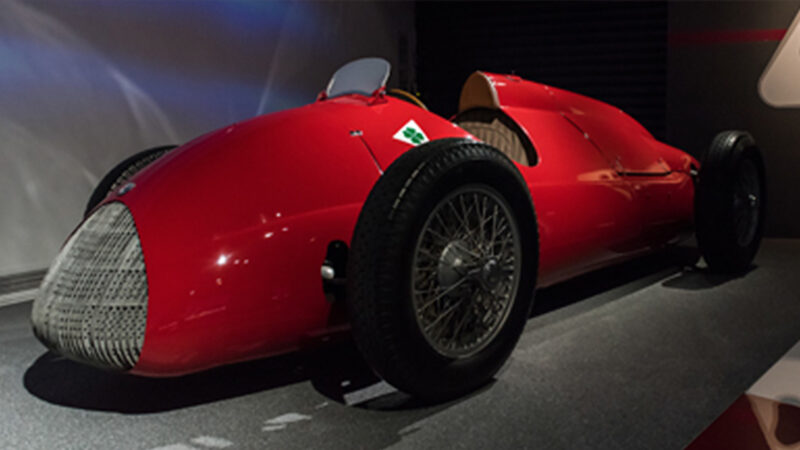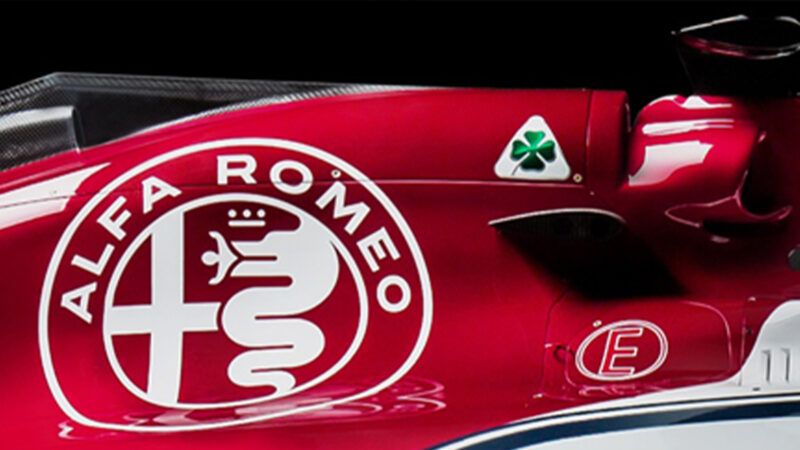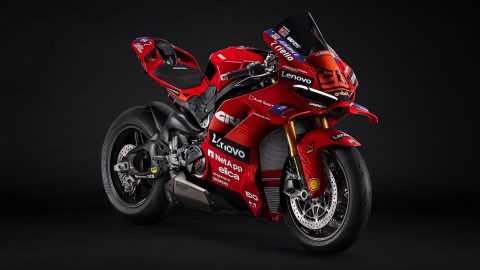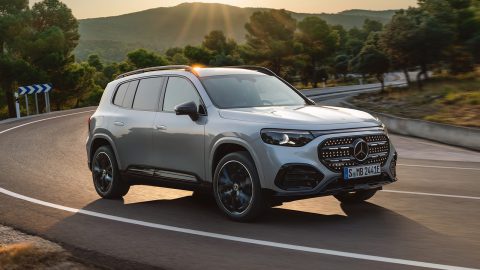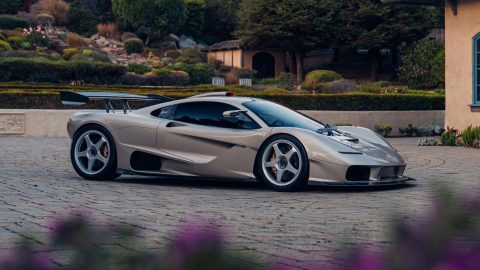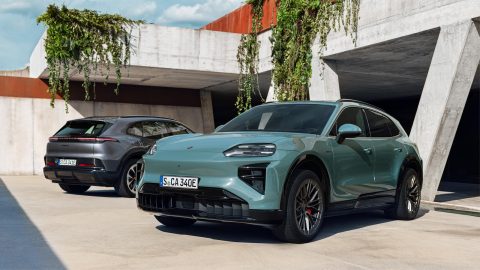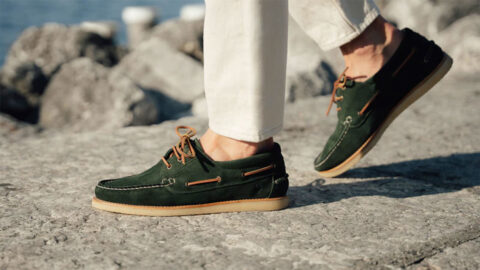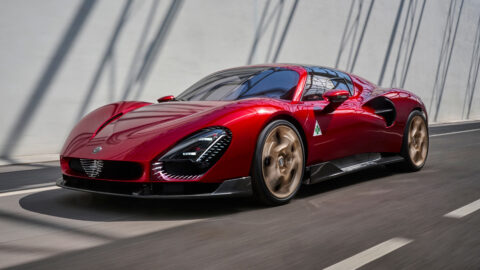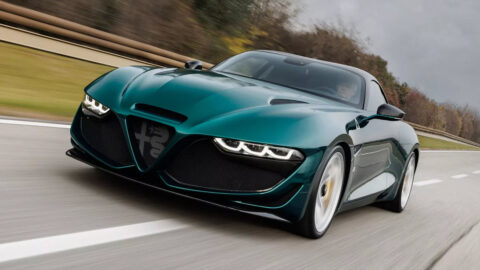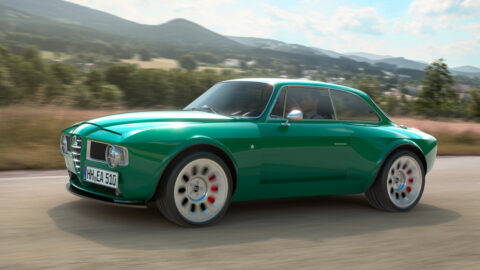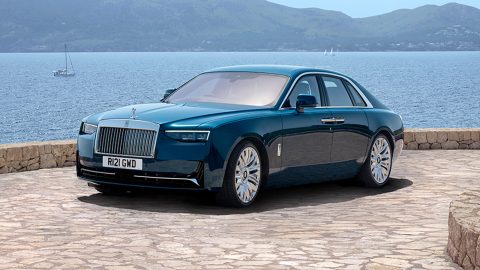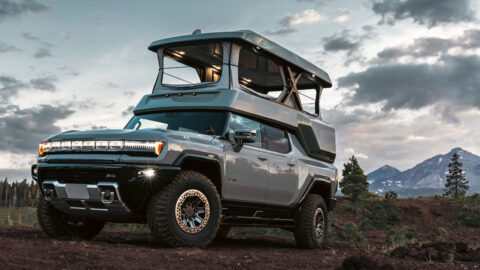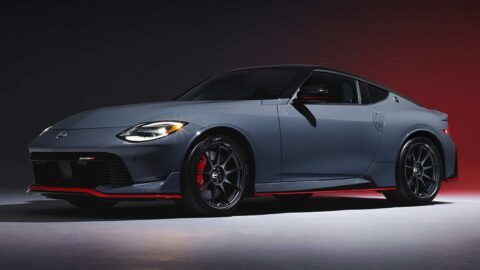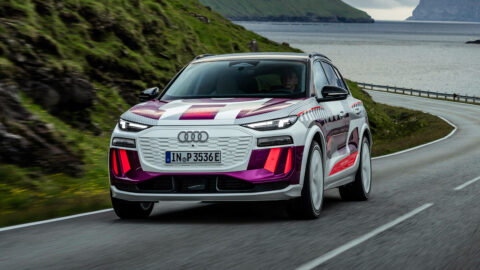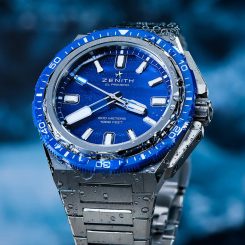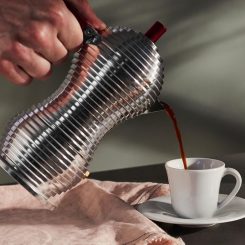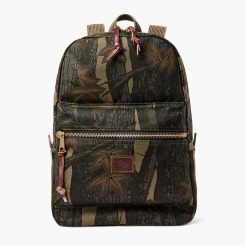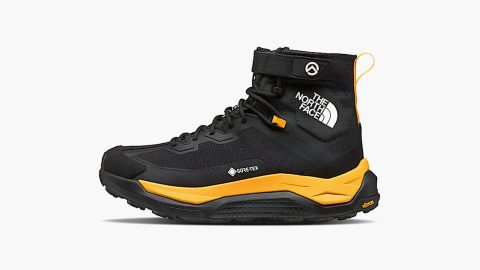If you grew up watching “Old Top Gear” you more than likely hear Jeremy Clarkson’s voice booming in your inner monologue when you see an Alfa Romeo. You can hear Clarkson saying, “You can’t be a true petrolhead until you’ve owned an Alfa Romeo.” Why? Because Alfa Romeos are, for the most part, beautifully designed vehicles that offer human qualities – a romantic way of saying they have faults.
Of course, Clarkson’s quote is an over-exaggeration, but if you have a deep appreciation for cars, then you know what he meant. You’re more likely to develop a bond with a vehicle that can both test and reward your patience rather than one that never gives you any trouble at all. However, after 110 years of building cars, has Alfa Romeo’s lost a bit of its charm? First, we have to briefly look at its history to understand why Alfa Romeos are often associated with passion.
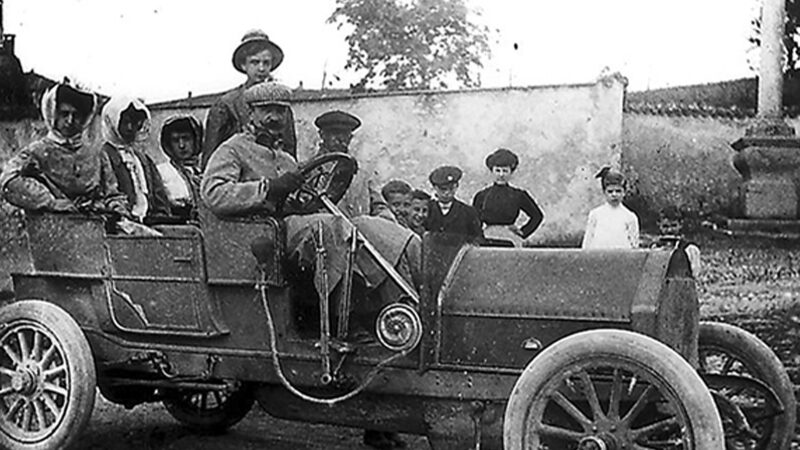
24HP 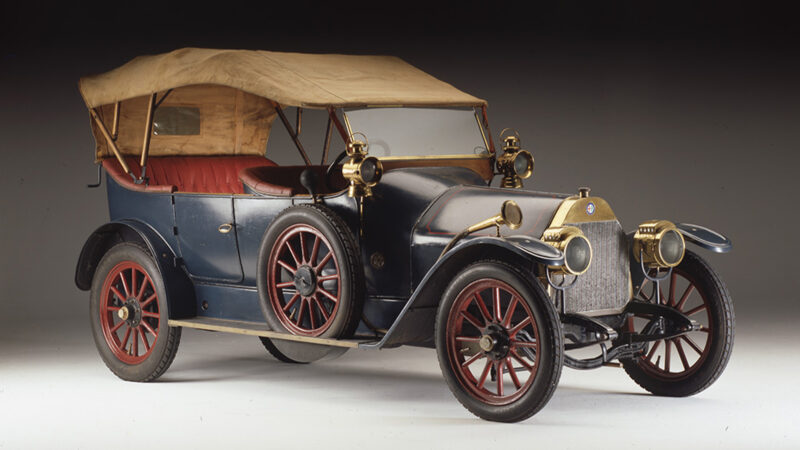
24HP
Like Ferrari, Alfa Romeo’s origins center around a passion for motorsport, opening its doors in 1910. The company’s original name was A.L.F.A. (Anonima Lombarda Fabbrica Automobili). Soon after it was established, it immediately started racing its first production car – the 24 HP. The Romeo half wasn’t added until Nicola Romeo took over in 1915, and by 1918 Alfa Romeo became a publicly-traded company.
The era between world wars was financially difficult for Alfa Romeo, but they had plenty of positive publicity by winning races and were seen as an automotive manufacturer of quality vehicles. In 1923, Alfa Romeo won its first international race at the Targa Florio. A four-leaf clover dressed on the race car’s hood started as a lucky charm was adopted into a symbol for the automaker. Later on, it was used as an emblem for sportier versions of its production cars.
A four-leaf clover dressed on the race car’s hood started as a lucky charm was adopted into a symbol for the automaker.
The 1920s and 30s saw Alfa Romeo win the First World Championship for Grand Prix cars in 1925 with the GP Tipo P2, four 24 Hours of LeMans races, and 11 Mille Migila edition races. Even with success on the track, in 1928, Nicolas Romeo had left the company. In 1933, Alfa Romeo was purchased by the state Institute for Industrial Reconstruction.
The government-owned institute saved the company by reorganizing it to manufacture airplane engines and heavy-duty trucks, just in time to see the start of the Second World War. The Alfa Romeo racing team was entrusted to none-other-than Scuderia Ferrari led by Mr. Enzo Ferrari himself.
Over the last 70 years, Alfa Romeo has produced vehicles that check all the boxes: beautiful to look at, darling to drive, and therapeutic to listen to.
After World War II, Alfa Romeo was demilitarized and focused on making production cars again. They had great success with the Alfa Romeo Giulietta and Giulia models. Over the last 70 years, Alfa Romeo has produced vehicles that check all the boxes: beautiful to look at, darling to drive, and therapeutic to listen to.
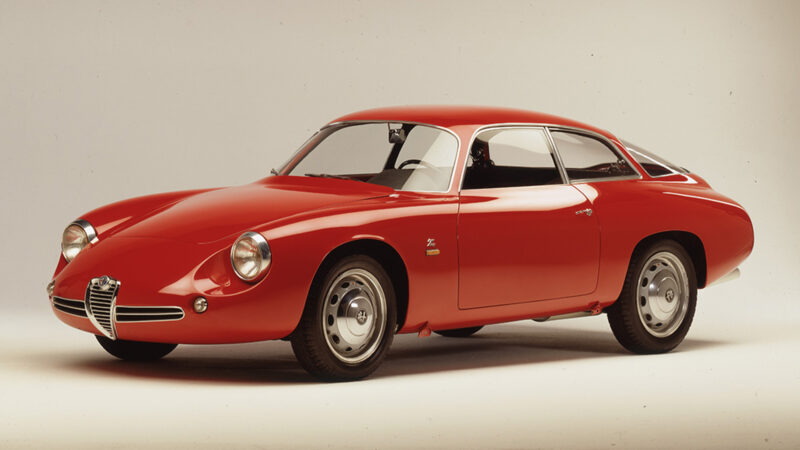
GIULIETTA SZ “CODA TRONCA” 
GIULIA TI SUPER 
GIULIA TZ
Case in point, the 1954 Alfa Romeo Giulietta. It was designed and built by Bertone as a 2+2 sprint coupe. It was compact, elegant, and sporty, with room for rear passengers. The Giulietta success came partly because Alfa Romeo offered a four-door Berlina and convertible Spider versions of the car. The Giulietta looks as if it was shaped by the air it passes through with soft lines that wrap around the car. This was also the first car to use Alfa Romeo’s legendary twin-cam 1.3-liter engine producing 53 horsepower.
The 1965 Alfa Romeo Giulia GTA cemented the Giulia’s status as more than just a stylish saloon car.
The 1965 Alfa Romeo Giulia GTA cemented the Giulia’s status as more than just a stylish saloon car. The GTA spec meant all the steel panels were replaced with aluminum. Its 1.6-liter all-alloy engine was given a twin-spark cylinder head, larger carburetors, and magnesium engine components. It was a factory Italian hot rod that could be used for commuting to work and thrash around weekend track-day events.

GIULIA SPRINT GTA 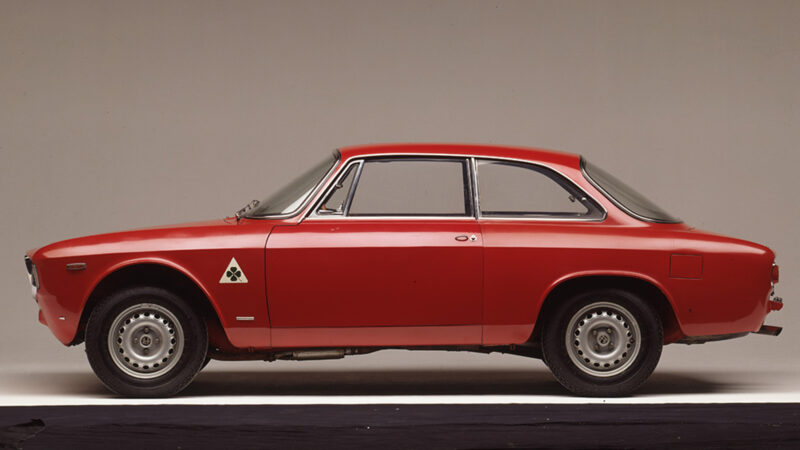
GIULIA SPRINT GTA
This article would be several chapters long if I went through the dozens of great cars Alfa Romeo has built. Still, I wanted to give honorable mentions to the 1970 Alfa Romeo Montreal for being, what I feel, is one of the most beautiful production cars in existence. Its semi-hide-away headlamps and signature c-pillar, and tiny 2.6-liter V8 make for one extraordinary sports car.
So what happened in the last 40 years? Well, Alfa Romeo has been struggling in one way or another. Much like Chrysler, Alfa Romeo has been riding a rollercoaster of financial worry for most of its existence. In 1986, the state-owned institute that purchased Alfa Romeo in 1932 had put the company up for sale. That’s when Fiat took it over. Since then, Alfa Romeo has been operating under Fiat, along with Lancia, Maserati, and Ferrari.
By 2014, Alfa Romeo was back in the United States under the new Fiat Chrysler Automobiles group (FCA). This push involved buying Super Bowl Ads and earning a Car of the Year awards by creditable automotive media outlets. I was there when the 2017 Alfa Romeo Giulia Quadrifoglio was voted Car of Texas by the Texas Auto Writers Association.
I’ve tested the Alfa Romeo 4C, Giulia Quadrifoglio, and Stelvio Quadrifoglio on race tracks and the street. The interiors may take a moment to figure out. However, in each vehicle the steering was as sharp as a surgeon’s scalpel. The performance was very fast, and they sang like you’d expect an Italian engine to. So why don’t I see more of them on the street?
According to Detroit Free Press, in 2019, sales of all three Alfa Romeo models available in the U.S. (Giulia, Stelvio, 4C) were down 27 percent from the previous years. The push to reintroduce the brand in the U.S. market has also shrunk. Jalopnik wrote a full review of the Alfa Romeo Giulia Quadrifoglio in 2017, written by automotive journalist and Editor Patrick George. He summed up this car with his final remark,
“It looks awesome, sounds incredible, is blisteringly quick, has a sketchy interior and will more than likely have disappointing reliability. In other words, it’s an Alfa Romeo.”
Maybe the problem isn’t that Alfa Romeos are losing their charm. Perhaps the consumer just isn’t seduced by it anymore. The modern consumer wants a product yesterday, in a clean, no-fuss package, and will accept all terms without reading the contract. The market doesn’t have enough people to support cars that want you to want them even when they fail to start in the morning.
It’s the same reason manual transmissions, single cab pickup trucks, and four-door sedans are slowly going away – not enough people are buying them.
It’s the same reason manual transmissions, single cab pickup trucks, and four-door sedans are slowly going away – not enough people are buying them. Instead, they go for the automatic crossover SUV that is easier to get into, simpler to drive, or the four-door pickup truck that can double as an SUV. Modern vehicles behave more like smartphones than machines and are now faster and safer because of it. Still, all this technology leaves little room for passion and romance.
Alfa Romeo hasn’t changed. We did.


